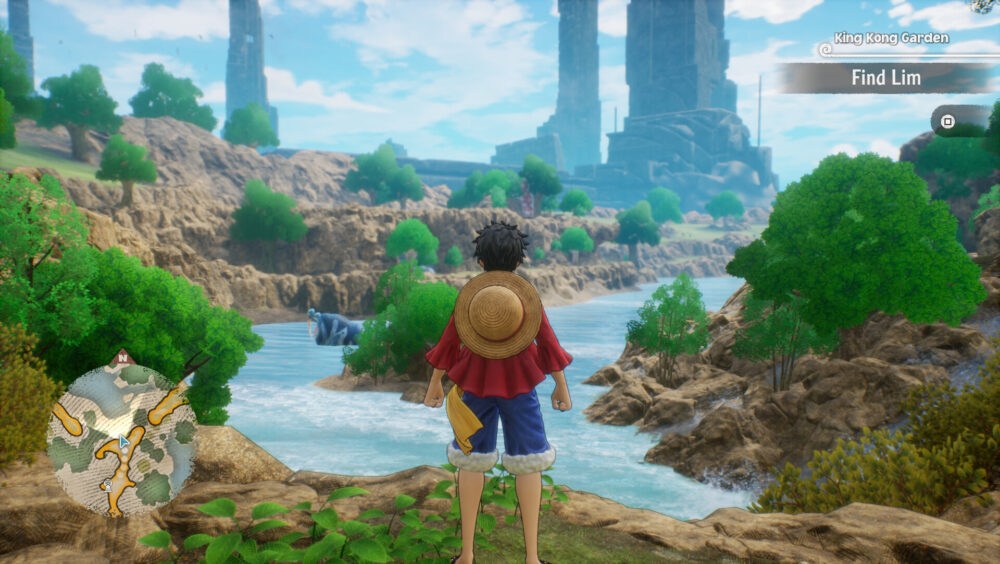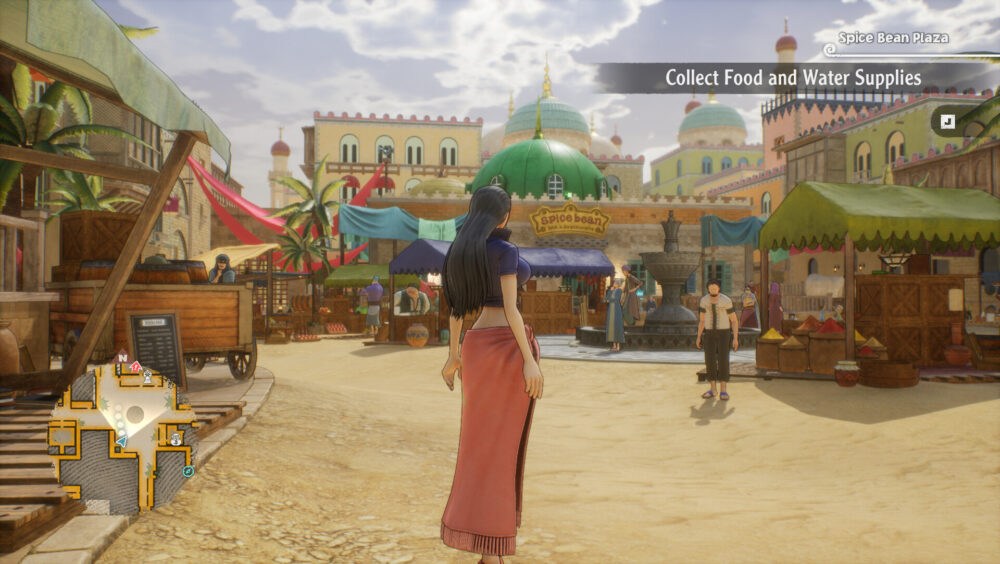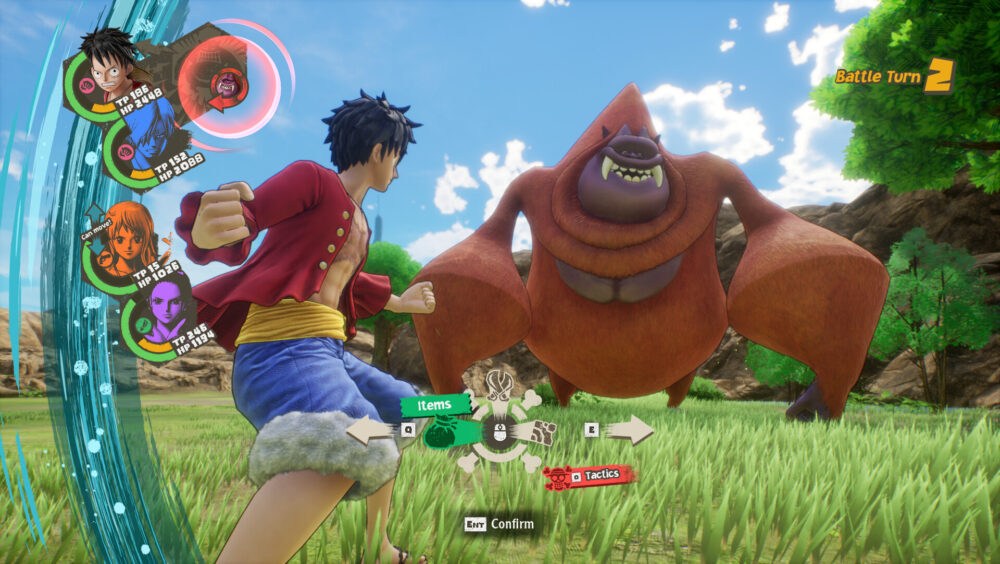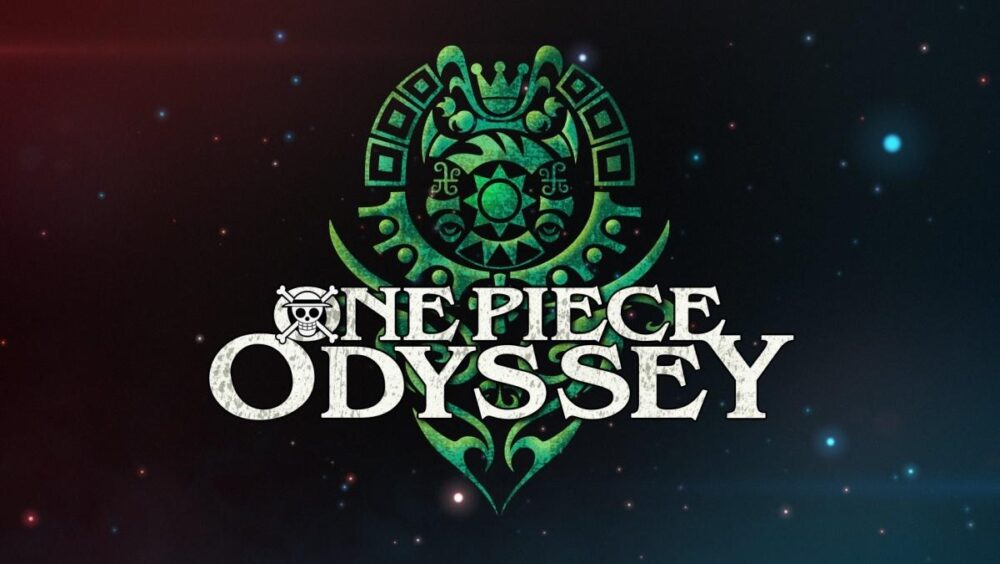One of the things that have always irked me about anime videogame adaptations is that few of them really take as much advantage of the source material as they could, especially in the Shonen genre. With such a vast library of characters and locations, I’ve always felt it was criminal to merely adapt them to fighting games or Dynasty Warriors-style brawlers only. One series that did do for me what I wanted with an anime game, i.e. running around the world from iconic location to location, engaging with the inhabitants, was Ubisoft’s now sadly unavailable Naruto: Rise of a Ninja series. That gave me everything I’d ever wanted, especially depth when entering the world and I thought I wouldn’t get it again.
Until now.
Enter One Piece Odyssey from developer ILCA. Odyssey is the latest One Piece videogame based on Eiichiro Oda’s mega-popular, long-running Shonen series. This time the Straw Hat crew are gracing your local video game machine with a new tale set In the One Piece universe. The question is, is it worth sailing the seven seas so blue for?
Set between manga chapters, One Piece Odyssey is a traditional JRPG throwing you into the happy-go-lucky shoes of the famous Straw Hat pirates as they embark on another epic adventure. Due to some unforeseen sailing phenomena, the Straw Hat gang find themselves on the mythical island of Waford. After starting your adventure with a powered-up crew, Luffy and his friends find themselves stripped of their abilities and strength with the only way to get them back being to journey across the island, solving its mysteries, collecting magical cubes and journeying back into their collective pasts through recreated memories.

Odyssey plays like any traditional JRPG you may have played in the last couple of years, though with some welcome changes to the formula that I feel should become a standard. There’s a very distinct Dragon Quest vibe to the game, both in it the way it plays and its visuals, though stamped with Oda’s unique character designs and art.
There are plenty of large locations for you to explore, people to speak to, side quests to pick up, items to scrounge and bosses to fight. Immediately, part of what sets Odyssey apart from many games in this day and age is the overwhelming sense of happy-go-lucky optimism that permeates the Straw Hat crew. As such, Odyssey’s tone, even when the world is in peril, is delightfully infectious from the get-go and left me with a smile on my face due to the cast’s shenanigans.
Having such a large cast, and no doubt taking into account that fans will have their favourites, Odyssey lets you switch between any member of your party at any time when in the field. Though crew members may join and leave your party as the story dictates, you’re not bound to setting up a party of four before venturing out into the field or having to change only at certain points if you feel like you should have taken Robin with you instead of Sanji.
Each character’s specific skills also come into play during exploration in small ways. Luffy’s stretchy abilities let you grab items from afar or pull yourself to distant locations. Nami can find hidden money while Zorro can cut through specific metal doors and crates.

Dungeons abound as well. Thankfully, to break up the gameplay, they’re usually light puzzle-orientated scenarios, along with fighting and are a lot of fun to play through.
In a bid to please fans, and possibly educate new players to the world, you’ll be spending a lot of time in Memoria. Memoria is a memory recreation of some of One Pieces most notable, fan-favourite arcs, viewed through a “What if. . .” lens where things haven’t happened quite as our heroes remember. This lets veterans relive some of their favourite franchise moments while still being surprised by some of the events. Newcomers will get a crash course here in what makes the Straw Hats crew so lovable to many.
Memorias are vital to progressing the main campaign and teaching the new character Lim about the bonds of friendship. They’re also there to unlock new. . . well the crew’s original skills that you’ve lost at any rate. Within Memorias are fractured bits of memory called Hysteria, which throws a set group into a memory offshoot that needs to be completed. These are worth doing because they unlock the game’s best attacks; group supers that do massive damage in delightfully absurd ways.
The game’s combat is as traditional as traditional gets. It’s turn-based through and through but utilises a rock-papers-scissor dynamic for character types. Here you’re looking at speed, power and technique, each of which is strong against one type while being weak against another. It adds depth and strategy to the combat system because you can’t entirely rely on powering through fights without paying attention. You could fight three of the same creature types, but this doesn’t mean that their attribute types are the same.

As with world exploration, you can swap characters in and out of the fight at any time without using up a turn. If Chopper isn’t doing great against a Sandora Dragon, you can swap him out to Usopp whose type may beat it, and so on. Complicating matters is that the battlefield is broken up into areas randomly in each fight. You could have Zorro facing off against three enemies while Luffy is all by his lonesome and you can move between areas to help out teammates, but only once you’ve beaten the enemy in your current area.
Another wrinkle to consider, though this one is really helpful, is that random objectives pop up in each fight, such as beating a specific enemy with a specific character or defeating a group within a specified number of turns. Beyond keeping you on your feet because some of these can be very dangerous, it also hits you up with a massive XP bonus at the end of each fight. It’s not uncommon for a couple of battles with successfully completed objectives to level you up with ease.
Fantastically, all of your party, whether you rotate them in or not, will receive the XP from every fight, reducing the typical RPG need to suddenly level grind specific characters late in the game. This alone should be a gold-standard design choice.
Visually One Piece Odyssey is a pretty-looking game. While it’s not cel-shaded, the developers have managed to capture Oda’s designs and styles in the textures, which have a hand-shaded look to them. Character models are fantastic as well, with great animation, especially with regard to each character’s special abilities. The game has performance and graphics modes, both of which run well though there are some frame stutters in graphics mode here and there. And, as we’ve come to expect from next-gen machines, super-fast load times on Series X.
The production values are top-notch, with the show’s cast returning to voice their respective characters here. It must be noted, there isn’t an English language track for the game though.

There are two areas that Odyssey does falter for me, namely the combat difficulty and pacing, particularly in the first Memoria sequence in Alabasta.
Initially, the combat is super easy, even after you’ve lost all your abilities. Within the first two hours, I’d levelled up to 20 with ease and then there’s a fairly large jump within the first Memoria that is a bit jarring. Even taking into account the attribute system, fights hit harder and lasted longer than I expected. Then there’s a drop when you head back to the island before another steep rise towards the game’s closing sections. It’s particularly jarring when a mini-boss encounter is harder than a main-boss one.
And then the Alabasta arc. While I did enjoy it, I did find it ran on far too long with far too much back and forth for quests, main and sub that ended up feeling more like busywork and, ironically, filler. And just when you think you’ve finished it, back in you need to go. Subsequent Memorias and the main island sections after feel like they fly by in comparison. As I said, while I did enjoy it, it could have been better-paced and streamlined.
The final question then is whether or not you need to be a One Piece fan to enjoy this. While it’s true that long-time fans will get the most out of the game and its greatest hits moment, there’s more than enough context for anyone new to the series or just looking for a great RPG to be able to jump into and get the gist of what’s going on. The writers have done an admirable job of presenting you with enough information to know what’s going on in the Memoria sections, while load screen tips, information, and the cast’s banter does the rest. And if all else fails, there are always wiki’s to hit up.
With great production values, fun gameplay and a cheerful atmosphere, One Piece Odyssey is easily one of the best anime and manga videogame adaptations I’ve played in years. Not only that, it’s also a new standard bearer for what the genre needs to aim for. Whether you’re a One Piece veteran, new to the series or simply looking for a great JRPG, One Piece Odyssey is a journey you should be taking.
Platforms: PlayStation 5, PlayStation 4, Xbox Series X and Series S, Microsoft Windows
Publishers: BNE Entertainment, Namco Bandai Games America Inc.
Grab your copy here https://www.xbox.com/en-GB/games/store/one-piece-odyssey-pre-order/9MVWQVD667PL
Enjoy the review? want to read more of our reviews? then click right here to be whisked away to the realm of our opinions.








You must be logged in to post a comment.